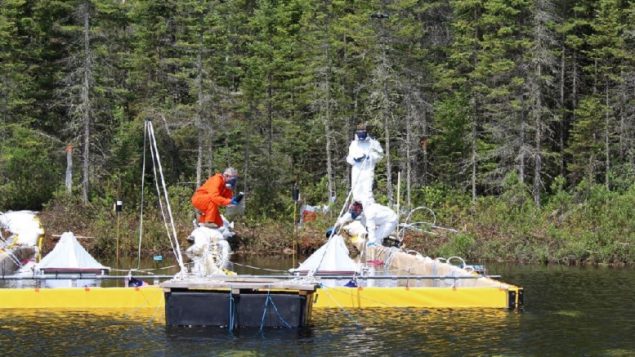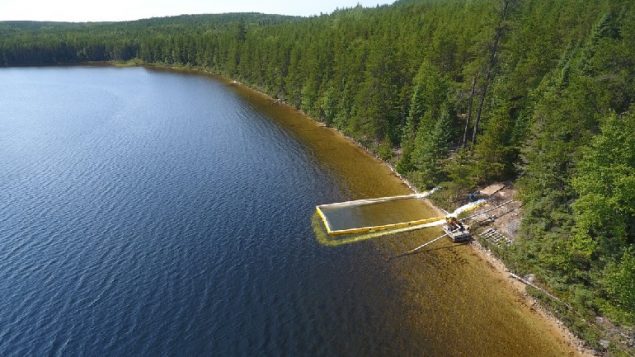Controlled oil spill to study effects on freshwater lake ecosystems
We have always recognised that oil spills cause environmental damage, but a group of scientists in northern Ontario are deliberately creating oil spills to study the effects on freshwater environments.
There are several types of oil, from heavy tar to refined fuels.
Very common now is the product “dilbit” i.e. diluted bitumen. This is the heavy bitumen from the oil sands, diluted with lighter oils in order to be pumped through the massive network of pipelines in North America, and via railway tank cars
Although there have been many previous studies on the effects of oil spills on the environment, there are gaps in understanding long-term effects and natural recovery, especially in connection with dilbit and how the chemical mix changes over time in the environment.
The complex study involves three phases at Canada’s unique freshwater experimental project at the International Institute for Sustainable Development – Experimental Lakes Area (IISD-ELA).
Vince Palace, the IISD Experimental Lakes Area’s Senior Research Scientist said that although much research has been and is focussed on oil’s effects on the marine environment, less is known about effects on freshwater ecosystems.
It should be noted that the thousands of kilometres of pipelines and rail lines traverse many many thousands of kilometres of freshwater marshes, lakes, rivers, and drainage basins.
The first phase of this groundbreaking experiment involves small “microcosm” land-based tanks.
The second involves cordoning off small sections of the lake from surface to bottom to study an oil spill effect of longer periods of time and effects on organisms such as bugs, fish, amphibians.
Phase three will involve clean-up methods and how they might affect the environment.
For the second actual lake phase, 1.25 litres of oil will be spilled into the enclosures comprising approximately 20,000 litres, and each will test the effects of different oils from dilbit to crude.
The longer term effects will be also be studied on residual oil which is always left even after clean up efforts. Comparing before and after this will look at effects on everything from soils, to microbes, algae, zooplankton, minnows and shore based plant life.

Researchers deliberately add a very small and controlled amount of dilbit or crude into the equally strictly controlled sections of an actual lake in order to study the effects on the ecosystem in the second phase of the study. (IISD-ELA / THE CANADIAN PRESS)
While lab tests and environmental simulations are certainly valuble they can’t determine effects and variable of inputs like sun, wind, rain waves and temperature variations which in turn are a complex interactive set of variables.
Quoted by the Canadian Press, Project collaborator Heather Dettman, senior scientist with Natural Resources Canada in Alberta, said the natural environment of the experimental lakes “is the next step up from the lab”.
Additional Information- sources
- ELA-5-research projects-blog- oil spill research–
- The Dryden Observer: M Christianson: Apr 8/18: no full lakes used in experiment
- Canadian Press (via PostMedia) L Evans Ogden: Jun 17/18: deliberate oil spill- impact on ecosystem
- Globe and Mail:M Mullin: Jan 30/18: What we know, don’t know about “dilbit”







For reasons beyond our control, and for an undetermined period of time, our comment section is now closed. However, our social networks remain open to your contributions.